How to attract the right job applicants through text analysis

A job description is more than just a list of responsibilities. The language and tone of voice can determine the quality of candidates you attract, or turn the right applicants away.
To understand how companies attract relevant candidates – we turned to text analysis, comparing STEM job listings to creative specifications. Roles ranged from mechanical engineers to creative directors, a total of 154,000 words, all in the New York City area.
Our comparison-based text analysis highlights the differences between the two sets of data. This analysis uncovered insights like desired applicant attributes and company culture unique to each industry.
Candidate Description
We found distinct differences between job listings from the two industries. One clear distinction was how each industry described the characteristics of a qualified candidate.
CREATIVE
Creative companies value qualitative traits in an applicant. Job listings were more likely to use individual traits like ‘passionate’, ‘innovative’, ‘fun’, ‘bold’ and ’emotionally intelligent’.
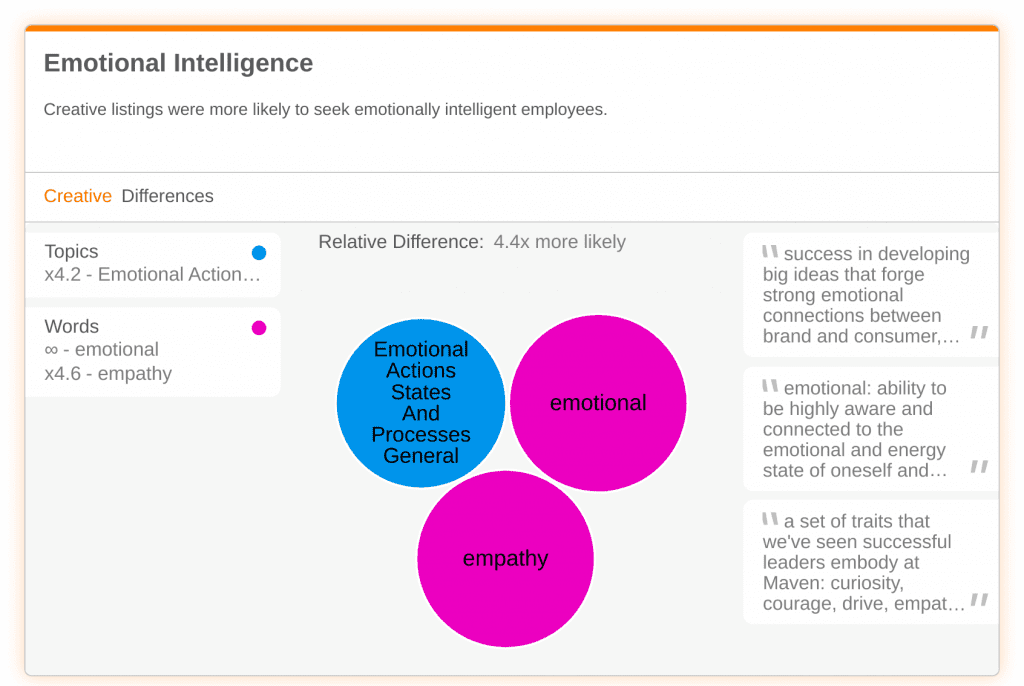

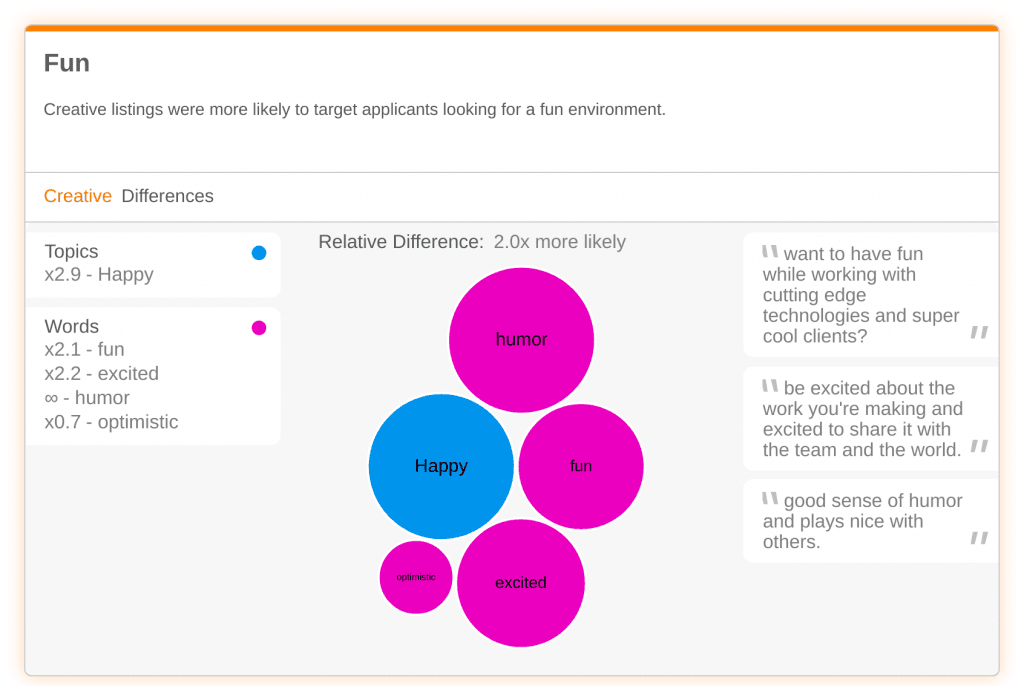

We also saw frequent use of professionally-relevant adjectives like successful, attentive and big picture thinkers. All of these qualities are subjective and cannot necessarily be quantified.
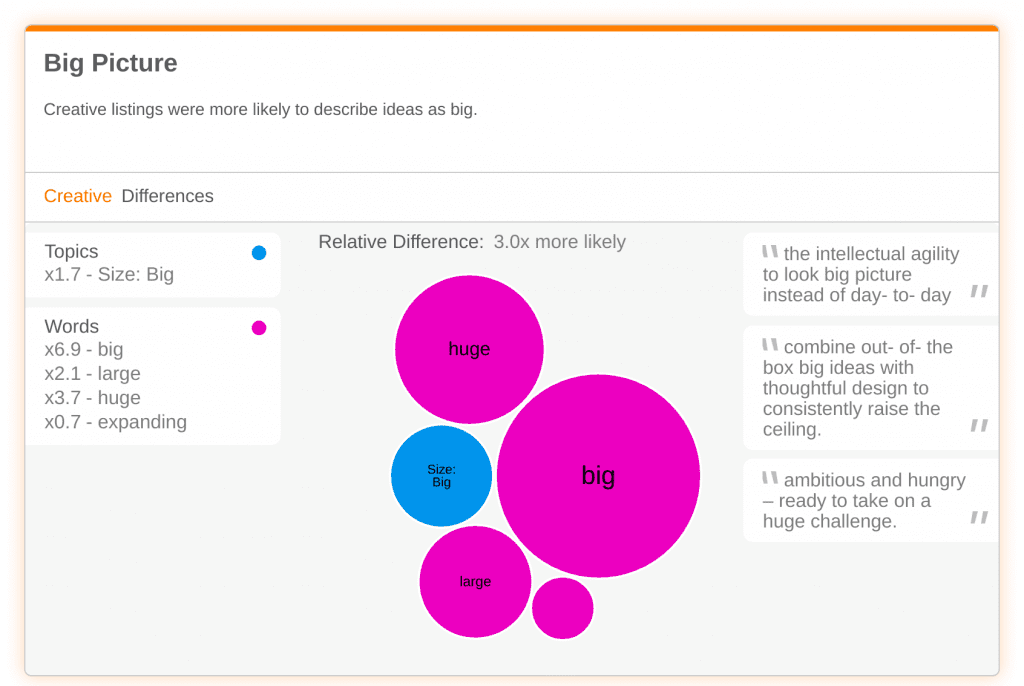

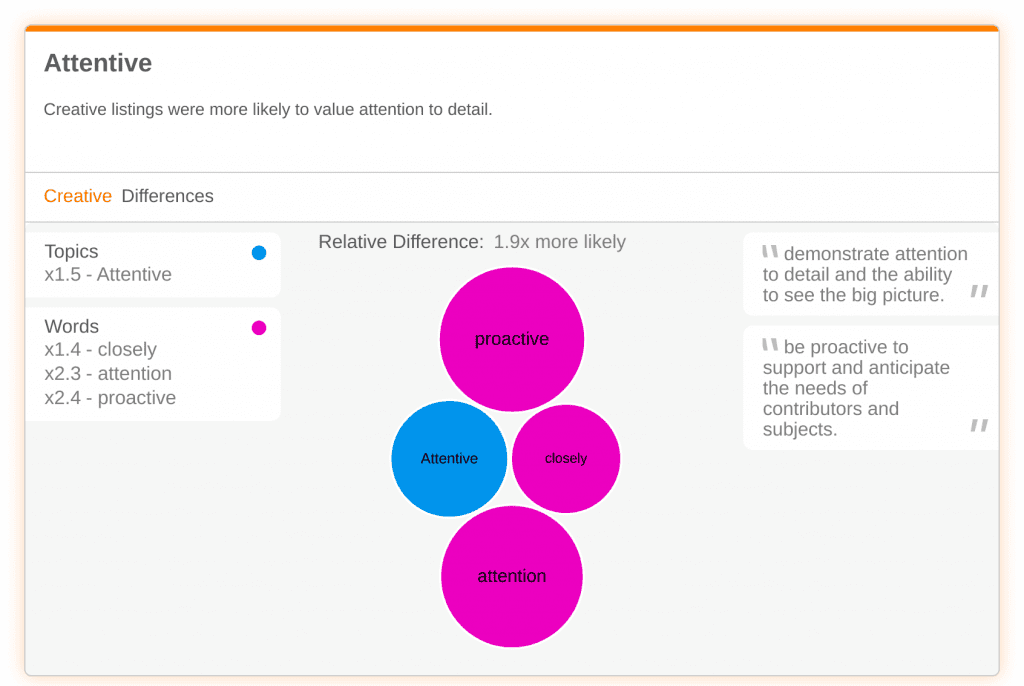

STEM
Engineering positions sought more concrete qualifications. Listings were more likely to detail specific requirements like degrees, expertise and certifications needed from the applicant. These prerequisites are based in experience as opposed to what we saw from creative careers.
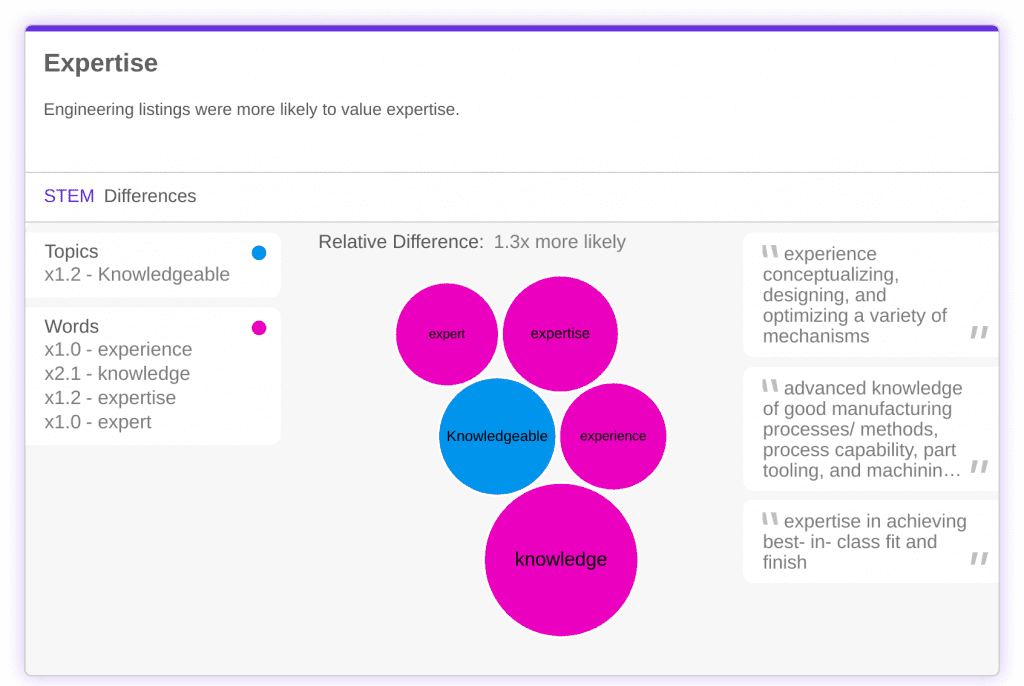

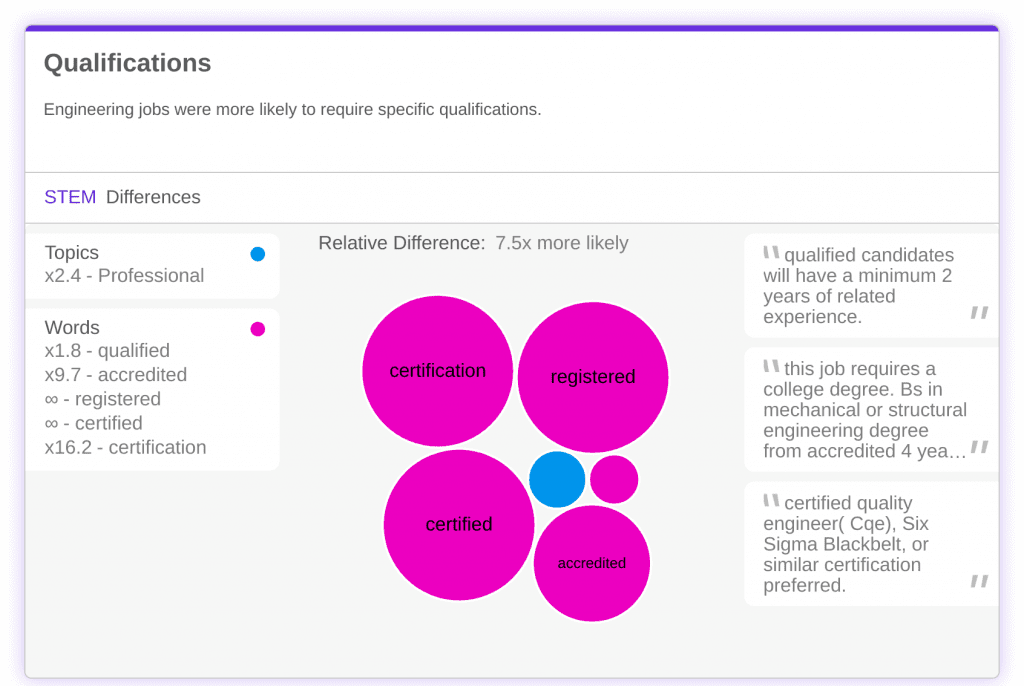

Job + Company Description
CREATIVE
When describing the position, creative companies emphasized the importance of ‘team culture’. Listings were also more likely to be transparent about the company’s goal to create a diverse workplace.
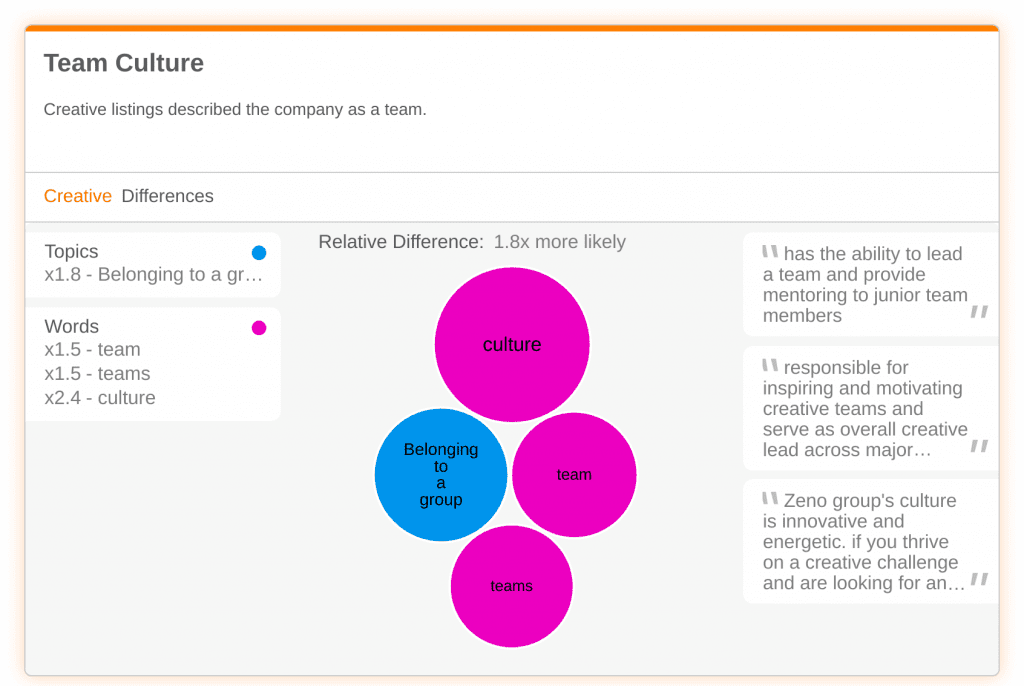

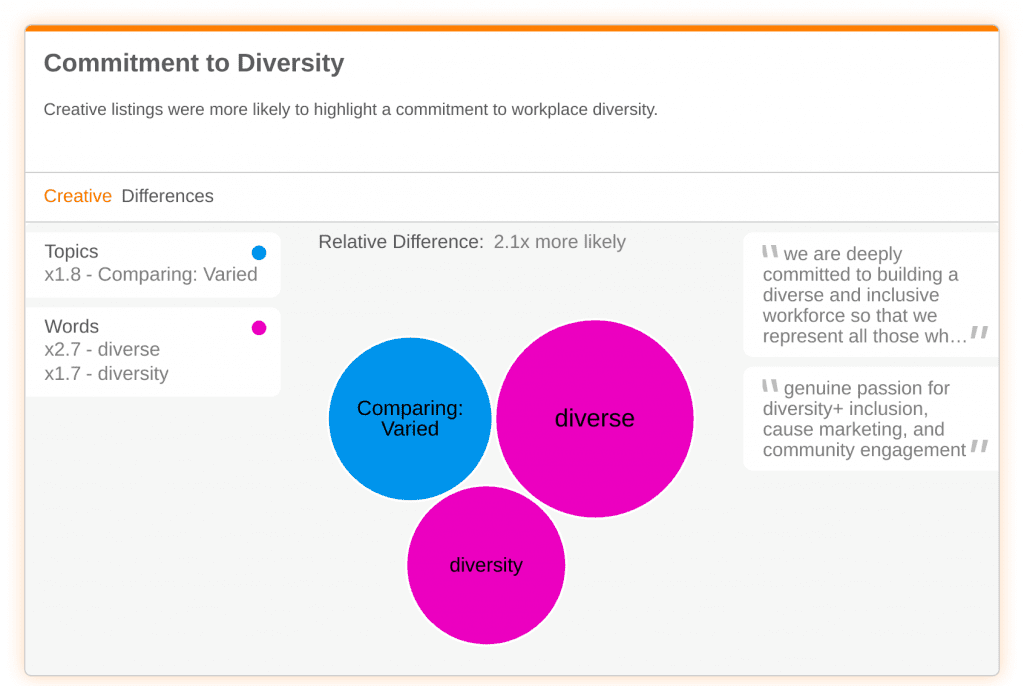

STEM
Among engineering roles, companies detailed the standard practices, rules and regulations required of employees. To entice applicants, they regularly described compensation as ‘competitive’ and the role as ‘rewarding’.
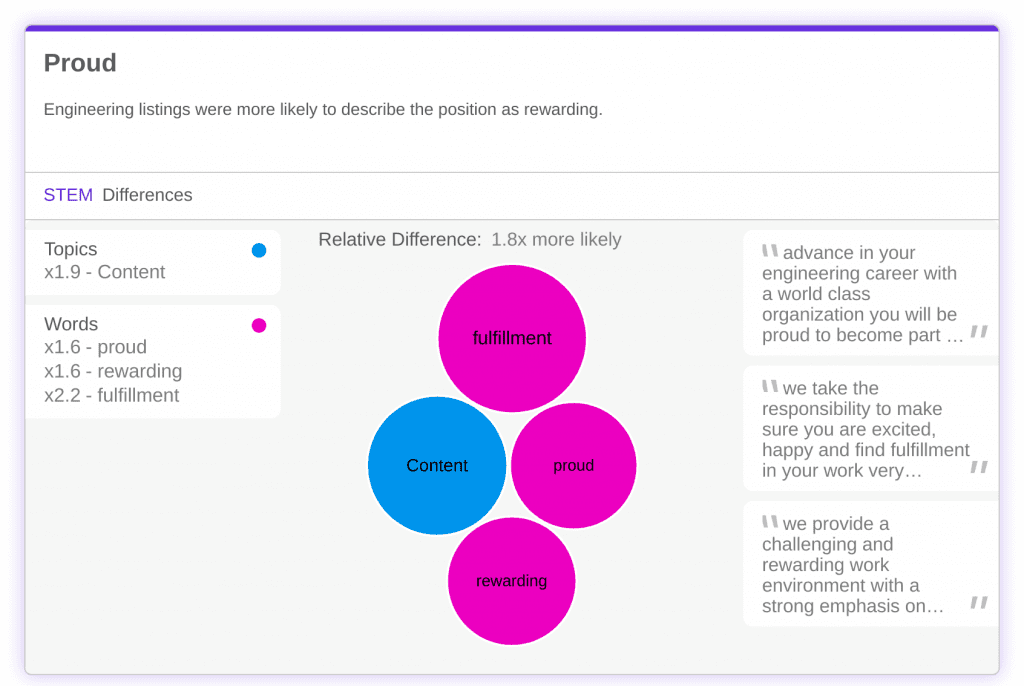

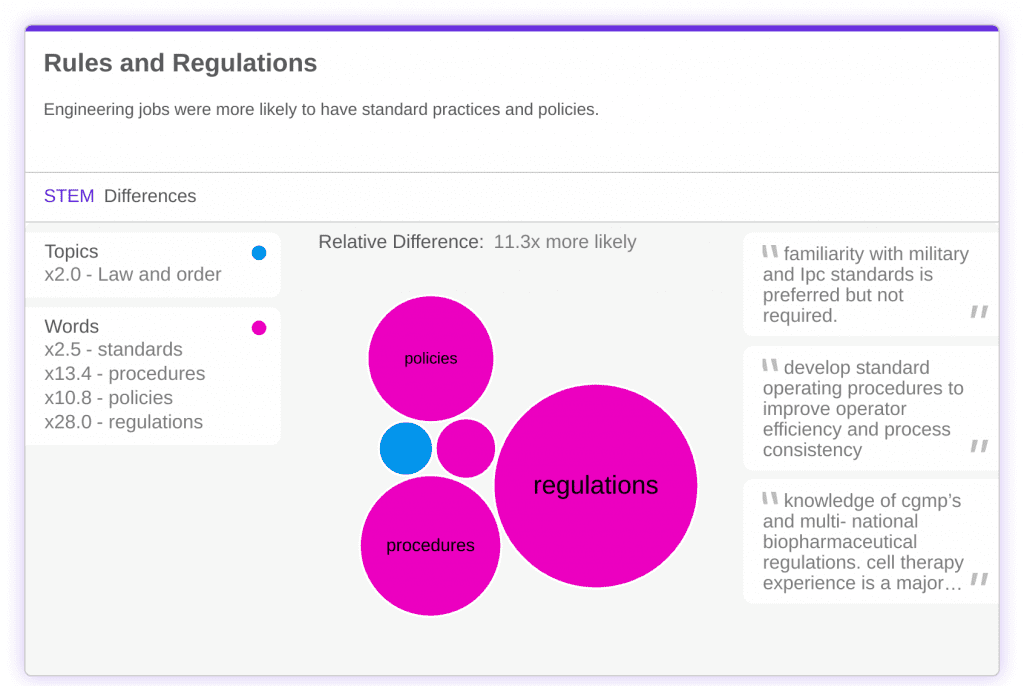

The differences in this text analysis were not only based in industry-specific words (ie. art or software). We found that STEM and creative companies use entirely different linguistic tools – like tone of voice and descriptive words – to appeal to the right audience of candidates.
Contact us using the form below!